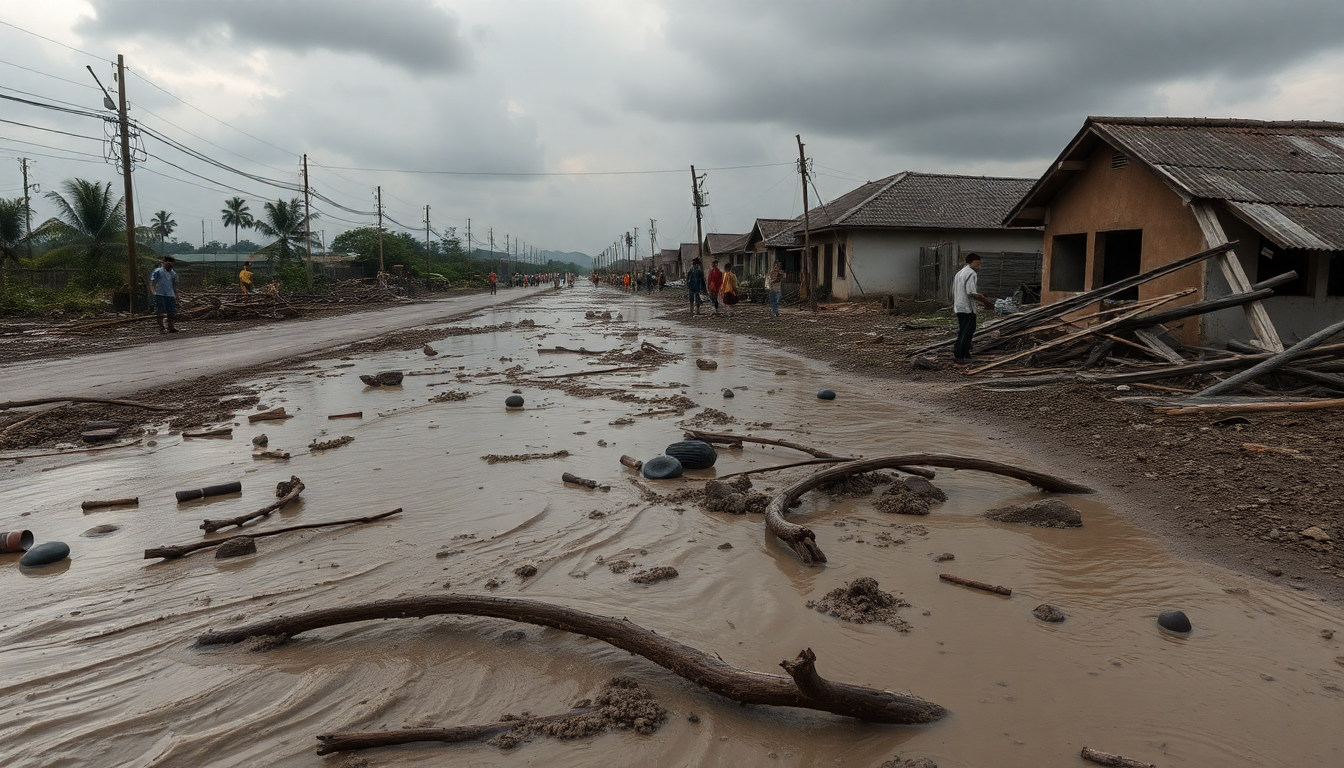Table of Contents
Typhoon Kajiki has recently made headlines for all the wrong reasons, tearing through Vietnam and leaving behind a trail of destruction. With lives lost and communities disrupted, the storm’s impact is a crucial reminder of the power of nature. But what does this mean for the people affected? Let’s dive into the immediate effects of the typhoon and the broader implications for the regions caught in its path.
Immediate Impact and Response Efforts
When Typhoon Kajiki hit central Vietnam, it didn’t hold back. With winds howling at speeds of up to 130 kilometers per hour, the storm caused significant damage to infrastructure. Sadly, reports confirm three fatalities, and many others have been injured. Power outages have left over 1.6 million residents in the dark, revealing just how vulnerable the region’s infrastructure is during extreme weather.
Rescue teams have faced a tough battle, with uprooted trees and downed power lines complicating emergency response efforts. Authorities are sounding the alarm about the risk of flash floods and landslides across eight provinces. In the mountainous areas, where flooding has cut off access to 27 villages, more than 44,000 individuals have been evacuated as a precaution. How can communities prepare better for such unpredictable storms in the future?
Long-term Implications of Climate Change
The rise in the frequency and intensity of typhoons like Kajiki isn’t just a random occurrence; it’s part of a troubling trend linked to climate change. While seasonal storms have always been a part of Vietnam’s landscape, the increasing severity raises serious concerns. The agriculture ministry has reported over 100 individuals either missing or deceased due to natural disasters in just the first half of 2025, highlighting an urgent need for adaptive strategies.
The devastation left in Typhoon Kajiki’s wake serves as a stark reminder of the challenges posed by climate change. The interaction of human activities and environmental factors creates a perfect storm (literally!) for natural disasters that can have catastrophic impacts. It’s crucial that policymakers and communities keep these realities in mind when planning for a more resilient future. Are we ready to face the next storm?
Community Response and Recovery
In the face of such adversity, the spirit of community shines through. People have come together, demonstrating incredible resilience and solidarity. Local governments and organizations are stepping up, mobilizing resources to assist those impacted by the typhoon. Relief efforts are in full swing, focusing on providing shelter, food, and medical assistance to those displaced. How can we continue to support these communities during their recovery?
As Vietnam tackles the immediate challenges presented by Typhoon Kajiki, it’s important to keep an eye on the future. Recovery isn’t just about fixing what’s broken; it’s about building better systems that can withstand future storms. Investing in disaster preparedness and response systems will be essential to ensure that communities are equipped to handle whatever nature throws their way.
Conclusion and Future Outlook
In the wake of Typhoon Kajiki, we are reminded of the vulnerabilities that communities in Vietnam face. As recovery efforts proceed, it’s vital for all stakeholders to prioritize sustainability and resilience in their planning. By learning from these experiences and adapting to our changing climate, Vietnam can pave the way for a more secure future where communities are ready to confront the challenges ahead. Are we prepared to make the necessary changes to safeguard our future?


